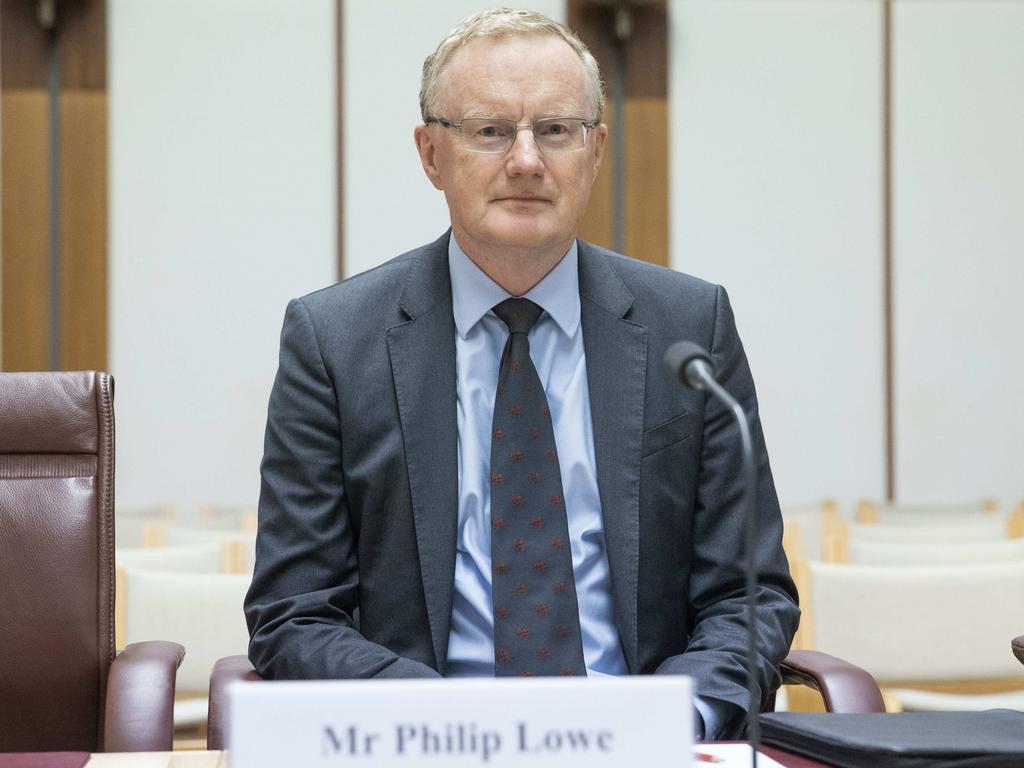When mortgage payments could drop and house prices rise
The RBA had to backflip and apologise to overstretched homeowners but there’s a sign good news is coming – but there’s also bad news.
Economy
Don't miss out on the headlines from Economy. Followed categories will be added to My News.
ANALYSIS
RBA governor Phil Lowe is good at taking a blow. He did so earlier this year when he suddenly backflipped from dovish guidance that the Reserve Bank would not raise interest rates before 2024.
He did so again this week, to the many mortgage holders who believed him and leveraged accordingly.
Governor Lowe is a career RBA man. No doubt he is sincere in his apology personally and in terms of protecting the brand of the institution that he leads.
But you can’t pay your mortgage with it. So the only kind of apology that households will be interested in is interest rate cuts.
The good news is they are coming and, perhaps, then Phil Lowe will enjoy a modicum of forgiveness.
The bad news is it will take a recession to deliver them and that is coming as well, so maybe he won’t.
Want tips to help manage the rising cost of living? Read Compare Money's guide >

What sort of recession?
A global recession is rapidly approaching from several different quarters.
Leading the way is Europe and its energy shock. Inflation on the continent is topping out above 11 per cent. The ECB is hiking rates aggressively to tame it and prevent relatively benign wage inflation of 4.1 per cent from breaking higher.
This is a classic supply-side shock recession.
China is in all sorts of bother as its housing construction crash continues unabated. It has no chance of recovery unless or until Covid zero is abandoned, which will be long and painful, or short and excruciating.

This is a classic balance-sheet recession and households deleverage to chase falling asset values.
Yet, it is in the US where the real action is. Its post-Covid experience has delivered a huge boost to wages to offset even higher inflation. The latter is now coming down but wages are still strong and that is making core PCE inflation, the measure used by the Federal Reserve, very sticky at around 5 per cent.
This means the Fed has to keep hiking above 5 per cent and maybe near 6 per cent to bring the economy to heal.
This is a classic wage-push inflation recession requiring higher unemployment in the making.
All three recessions will be made worse by one another as an inventory cycle forms around falling trade volumes.
Where does Australia fit?
Australia has an ignominious history of recession. Many will be surprised at this. The popular notion a few years ago is that we had virtually eliminated the business cycle.
The truth is less glowing. Australia has been in a recession every time that the world has. It’s just that it has been disguised by mass immigration at the headline GDP level. When measured in per capita terms, which is all that matters, GDP has shrunk during every global shock.
This time around Australia has features of all three of the above without being distinctly a part of any of them:
– Supply-side inflation shocks in energy and rents;
– Benign wage-push inflation;
– Falling asset prices leading to deleveraging and weakening consumption.
So, Phil Lowe’s RBA is raising interest rates as well. Not as high as elsewhere. But certainly high enough to trigger our own recession (even if only in per capita terms) owing principally to our very high household debt.
The RBA chief may need to warm up another apology yet.
Interest rates in 2023
There are three drivers of the potential recession of 2023 in Australia. The first is that the global economy will be in recession (that is, under 2 per cent growth). This will bring down commodity prices further and crimp national income (though nowhere near as much as usual given the Ukraine War).
Second, rising mortgage rates are pushing house prices down fast. Retail sales have been slowing all year. Confidence surveys suggest a dour Christmas ahead. The new year will bring worse as the “wealth effect” intensifies.
Third, and unusually for Australia, there is a secondary and very large income shock coming to households. Generous pandemic fixed-rate mortgages of around 2 per cent will roll off en masse next year at 5-6 per cent. When cross-referenced with other data sets, we can estimate that this will deliver a discretionary consumer spending shock in the range of 2-4 per cent of GDP.
These three should squash enough demand that pricing power for goods and services firms will fall away and with that will come disinflation.
We can add that it appears the Albanese government is wisely going to chime in with price caps for coal and gas to crash electricity prices.
As a little bit of each of the problems and solutions of Europe, the US and China arrive in Australia next year, they will likely kill inflation and allow the RBA to cut rates.
This will prime property and growth for a 2024 rebound, not least owing to the renewed surge of mass immigration.
Maybe then, Phil Lowe will be able to rest a little easier.
David Llewellyn-Smith is Chief Strategist at the MB Fund and MB Super. David is the founding publisher and editor of MacroBusiness and was the founding publisher and global economy editor of The Diplomat, the Asia Pacific’s leading geopolitics and economics portal. He is the co-author of The Great Crash of 2008 with Ross Garnaut and was the editor of the second Garnaut Climate Change Review.
Originally published as When mortgage payments could drop and house prices rise








